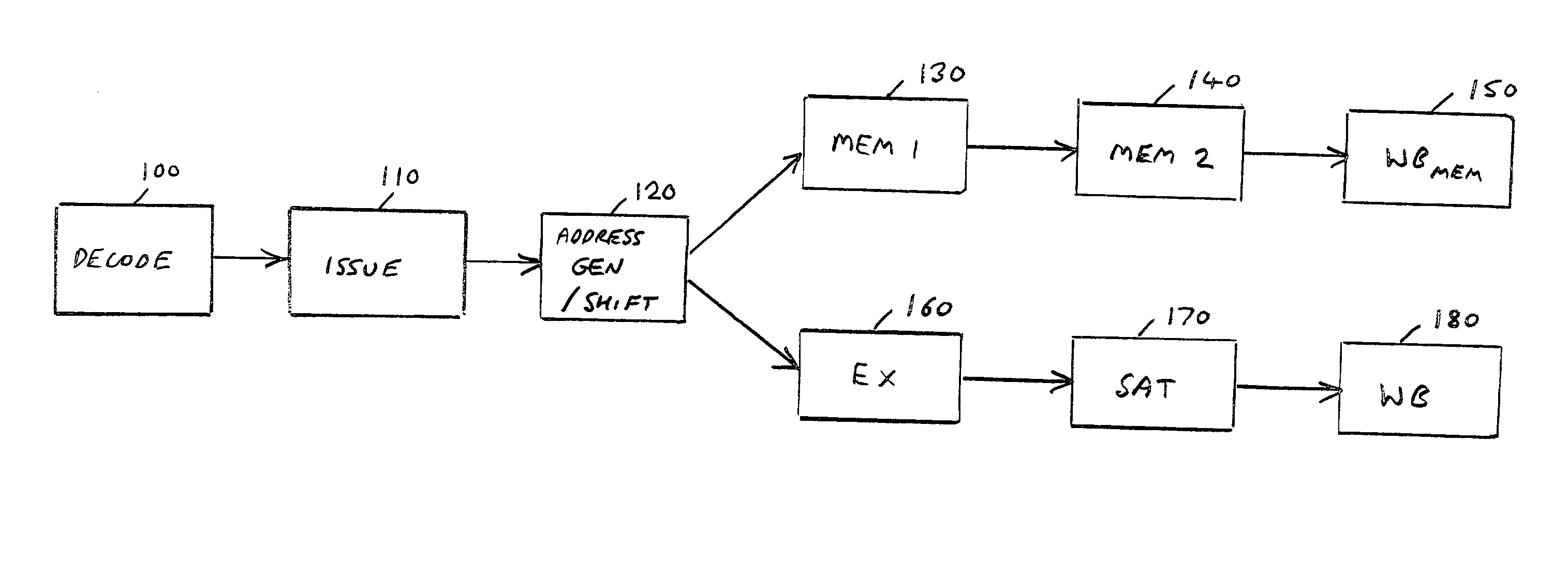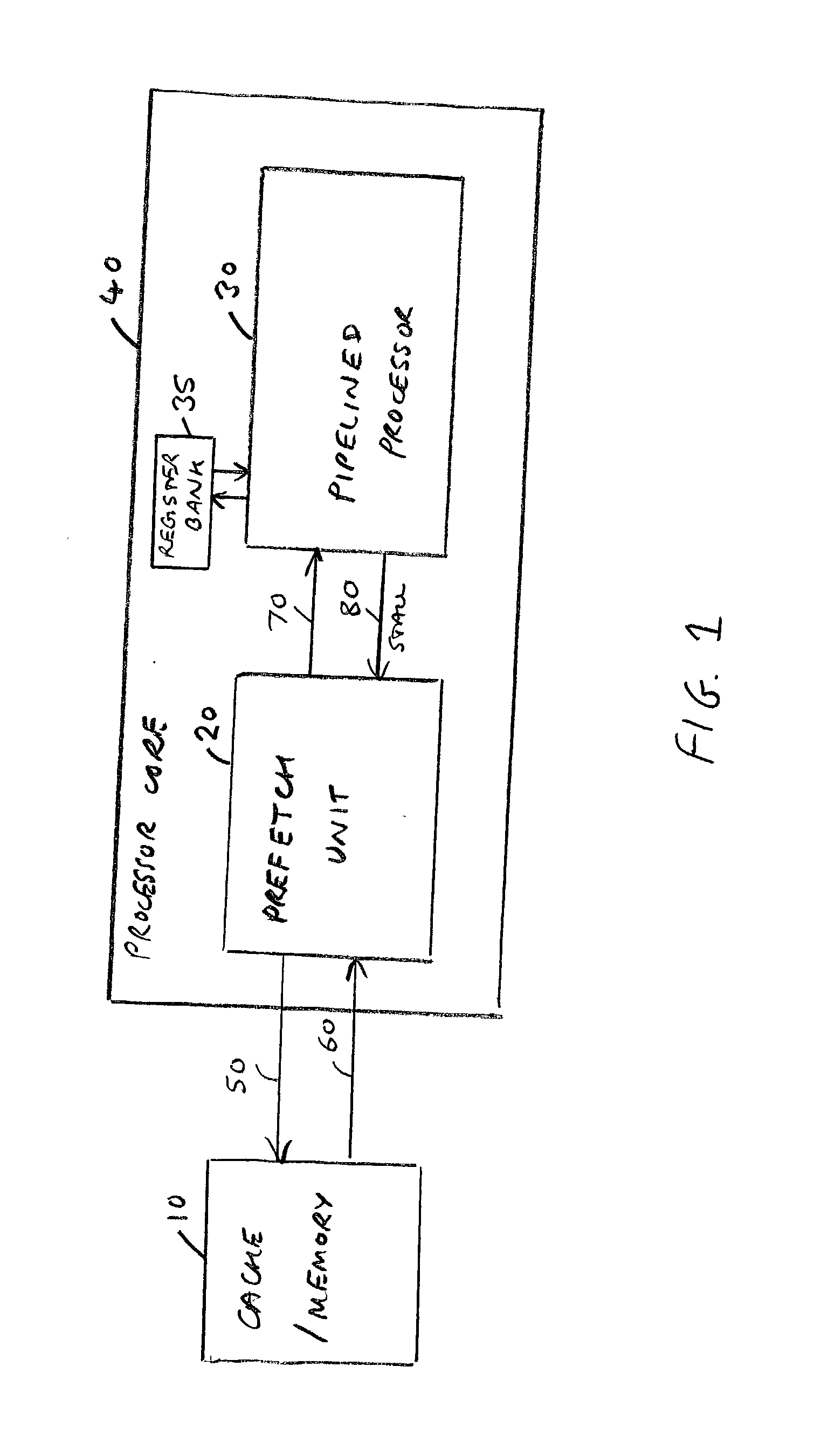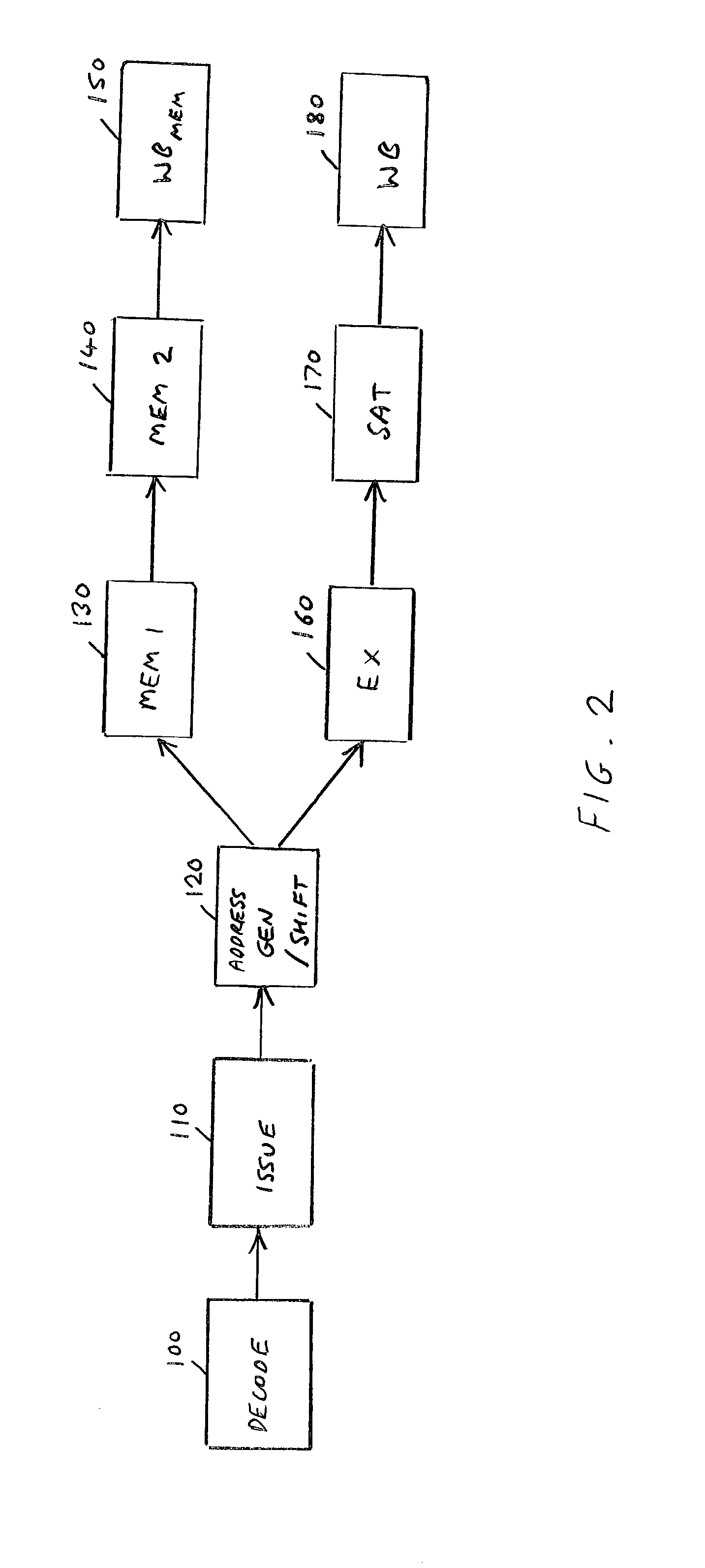Synchronising pipelines in a data processing apparatus
a data processing apparatus and pipeline technology, applied in the direction of instruments, specific program execution arrangements, program control, etc., can solve the problems of limiting the performance benefit of using multiple pipelines, synchronising between the instructions in the multiple pipelines, and limiting the speed at which the processor can be run
- Summary
- Abstract
- Description
- Claims
- Application Information
AI Technical Summary
Benefits of technology
Problems solved by technology
Method used
Image
Examples
Embodiment Construction
[0041] FIG. 1 is a block diagram illustrating a data processing system in which the techniques of preferred embodiments of the present invention may be employed. As shown in FIG. 1, a processor core 40 is coupled to a cache or other memory device 10 from which instructions required by the processor core 40 may be accessed. Within the processor core 40, a prefetch unit 20 is provided for issuing over path 50 requests for instructions determined by the prefetch unit to be required by the pipelined processor 30. The cache or other memory device 10 from which the instructions are retrieved then outputs the instructions back to the prefetch unit 20 over path 60, from where they are passed over path 70 into the pipelined processor 30. When executing instructions, the pipelined processor 30 will interface with the registers of register bank 35 containing data values to be manipulated by the instructions. Load instructions are used to load data values into the register bank from memory, and...
PUM
 Login to View More
Login to View More Abstract
Description
Claims
Application Information
 Login to View More
Login to View More - R&D
- Intellectual Property
- Life Sciences
- Materials
- Tech Scout
- Unparalleled Data Quality
- Higher Quality Content
- 60% Fewer Hallucinations
Browse by: Latest US Patents, China's latest patents, Technical Efficacy Thesaurus, Application Domain, Technology Topic, Popular Technical Reports.
© 2025 PatSnap. All rights reserved.Legal|Privacy policy|Modern Slavery Act Transparency Statement|Sitemap|About US| Contact US: help@patsnap.com



